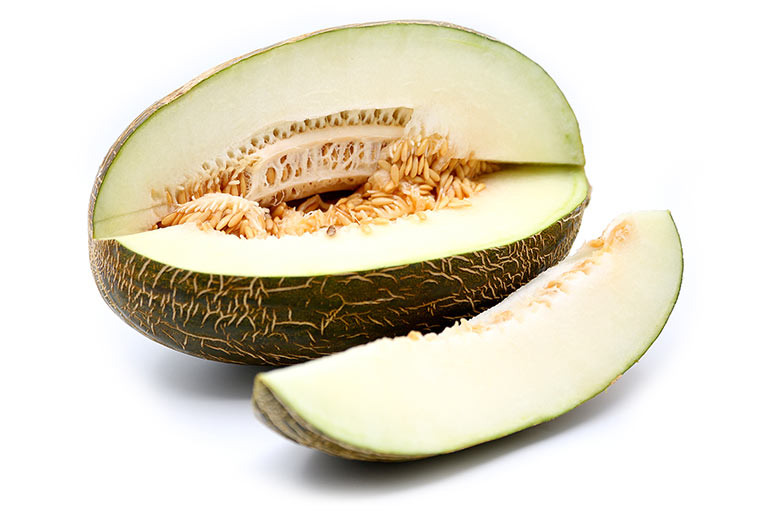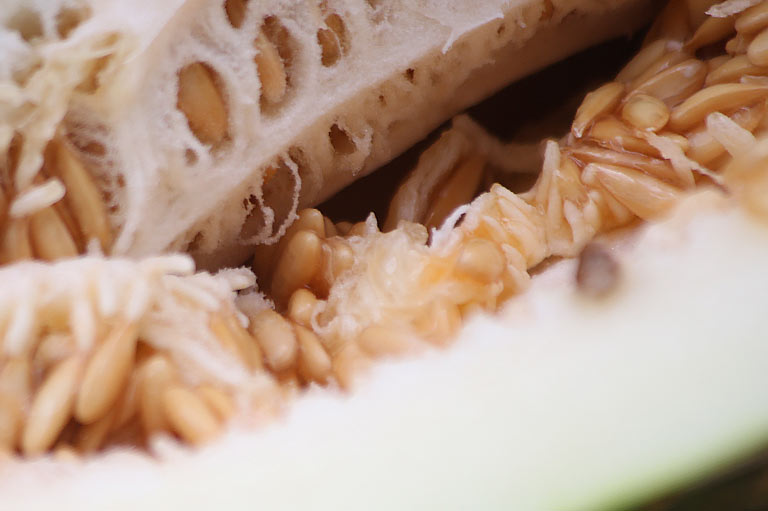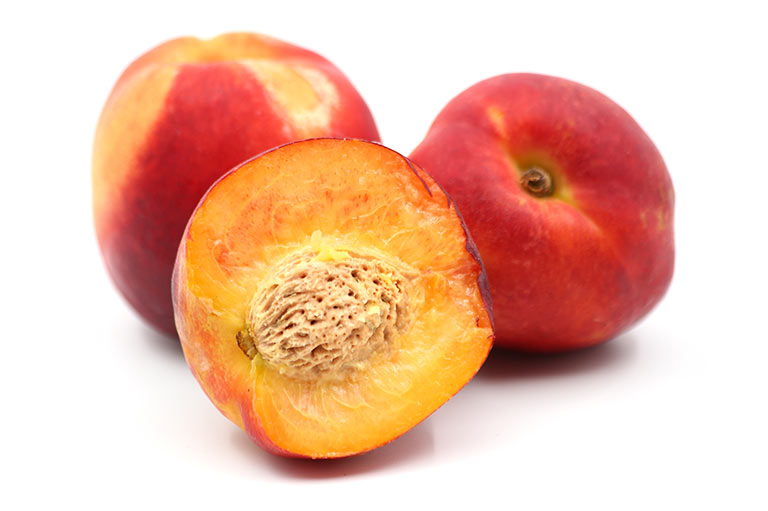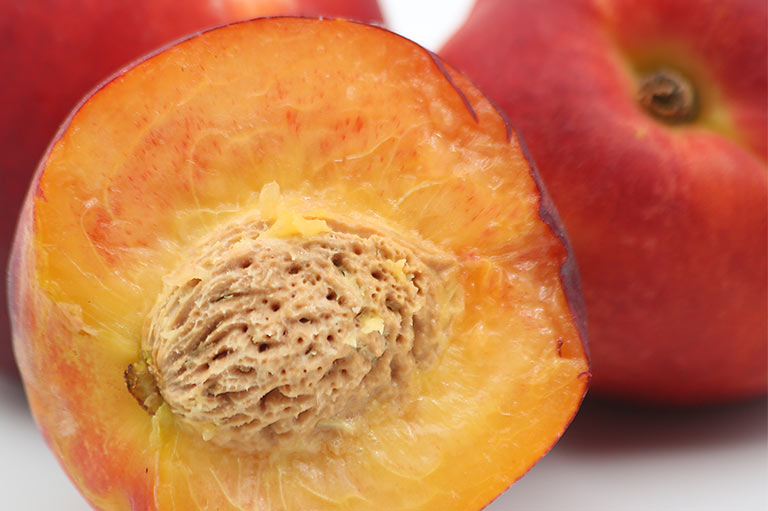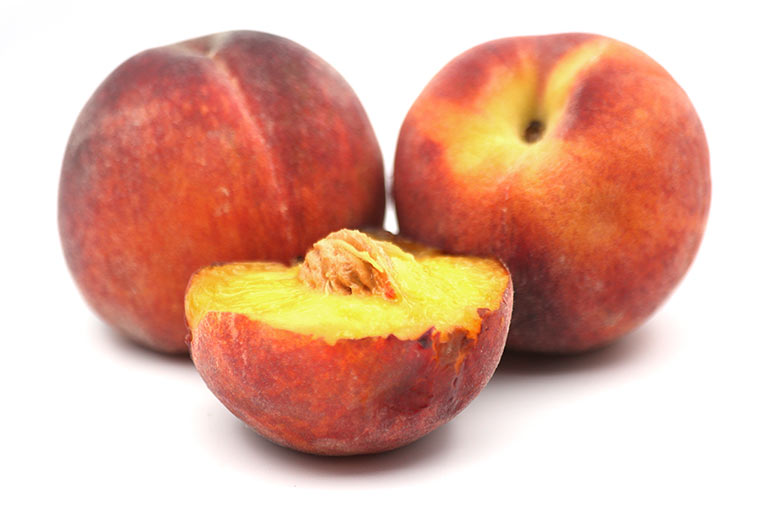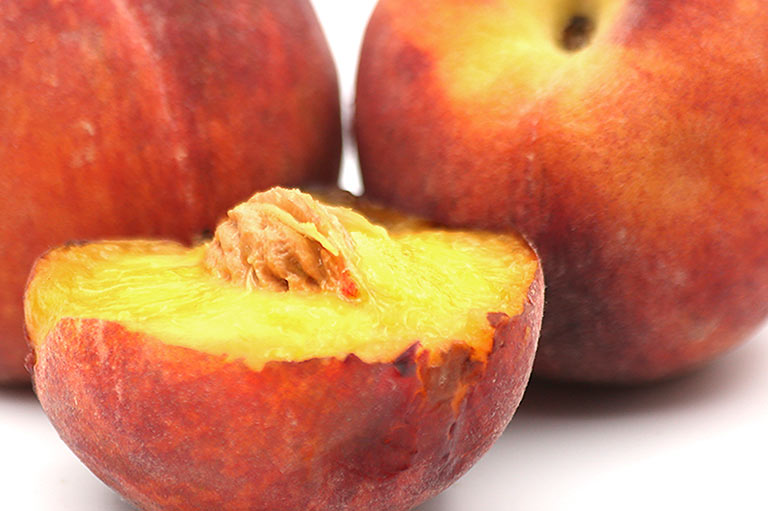July
July, especially the second half of the month, is when we take some time to rest in the cooperative. The sun rises early, sets late and it is very hot, so we use the opportunity to go to the fields and work in the first light of day, and then again in the evening.
Our stone fruit growers are busy harvesting, irrigating and watching out for the dreaded hail that can be delivered unannounced by summer storms. Long hot days and hard work… rewarded by enjoying a juicy melon, sweet nectarine or a succulent peach!
Piel de Sapo Melon
Available June – November
Cucumis melo is a trailing vine related to cucumbers, watermelons and pumpkins that produces both male and female flowers, allowing it to pollinate and grow fruit from a single plant. Sensitive to changes in temperature, melons require a lot of heat to thrive, so they grow well in Mediterranean countries with consistently hot, dry summers.
Though the origins of the melon are unclear, there are records of it being grown and eaten in ancient Egypt, and the fruit was being cultivated in Southern Europe by the 4th century BC. The Greeks called melons melopepon, meaning ‘apple-gourd’, which became melopepo in Latin and was shortened to melon or similar in almost every Western language. They were first brought to Spain by the Arabs who were aware of their beneficial properties, one proverb saying “he who fills his stomach with melons will be filled with light”.
Today melons are one of the most cultivated fruits in Spain, and the particular Piel de Sapo variety originated here. It has a long shelf life of 2-3 months (giving rise to the English name Santa Claus melon), provides a low 31 calories per 100 grams and is one of the most hydrating fruits, with its large percentage of water. High levels of vitamin C mean Piel de Sapo can be recommended for pregnant women and children, and its potassium, magnesium and calcium content is also high, helping to reduce blood pressure and improve fluid retention.
Did you know that before there were refrigerators melons were kept in holes in the ground, or even underground in mines, to keep them cool and enhance their flavour?
Nectarines
Available June – August
Nectarines are a variety of peach, one of the oldest domesticated fruits, and were first cultivated in China as long as 6000 years ago. The mutation of a single gene is responsible for the difference between the smooth outer skin of a nectarine and the fuzz of a peach, and as individual branches of a peach tree can carry this mutation, it is possible for both nectarines and peaches to grow on the same tree.
Unlike other fruits such as lemons or grapes, nectarines are climacteric, which means they continue to ripen after being picked. Kept at room temperature, a near-ready nectarine will become ripe within a few days; then, once ready to eat it can be moved to the refrigerator. This will slow down the ripening process (though like most fruits, they will taste best served at room temperature).
Nectarines are packed with dietary fibre, vitamins and minerals; a nutritious and delicious snack that can be eaten raw and without peeling. They also make for a thickly sweet and slightly spicy ingredient in jams, pies and other desserts, combine well with savoury main courses like pork, or can be caramelised by placing directly onto a hot grill.
Peaches
Available May – August
The peach is a seasonal fruit that becomes available in the summer and early autumn. The name peach comes from the Greek Persikon malon, meaning “Persian apple”, but peaches do not actually come from Persia; they originated in Eastern China and Persica reflects their later cultivation in West Asia, from where they travelled to Europe, reaching Greece around 300 BC. In China peach trees are prized for the vigour of their early blossoming (this happens even before the tree’s leaves have sprouted), and the fruit symbolises immortality in mythology, art and literature.
Peaches are an excellent source of vitamin C and beta-carotene, two nutrients that help maintain healthy skin; vitamin C improves collagen production, while beta-carotene helps protect against harmful UV rays. High levels of vitamin C also makes peaches an excellent choice for strengthening the immune system, helping to prevent illness, reduce inflammation and promote rapid healing.
Peaches are a simple fruit to prepare as a fresh and healthy snack; simply wash and cut them into wedges. They can also add interesting new flavours to salads; try adding cubes of fresh peach to leaves like lettuce, spinach or rocket, along with other ingredients like tomato, light cheeses or nuts.
